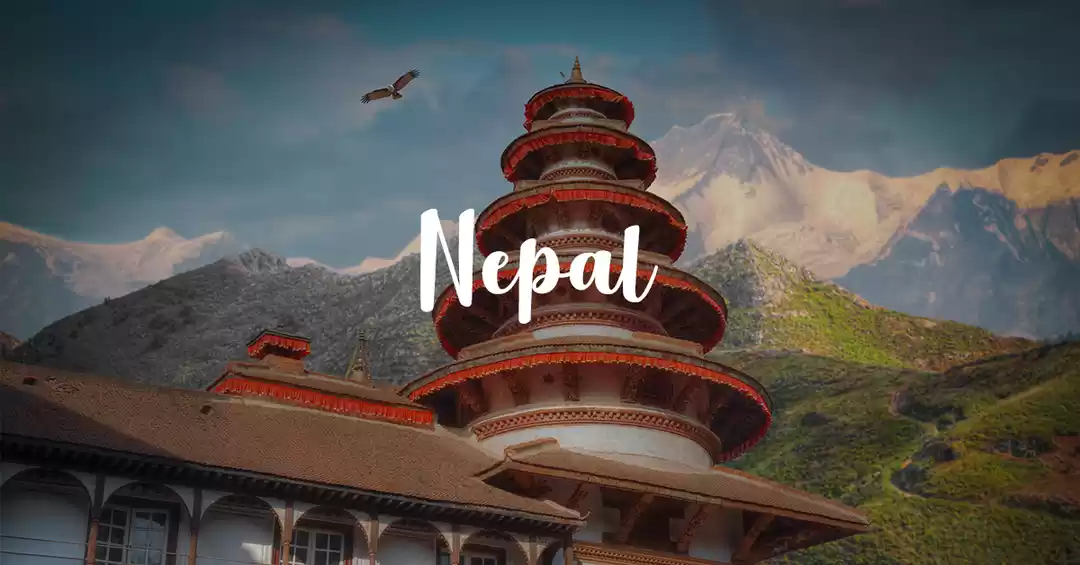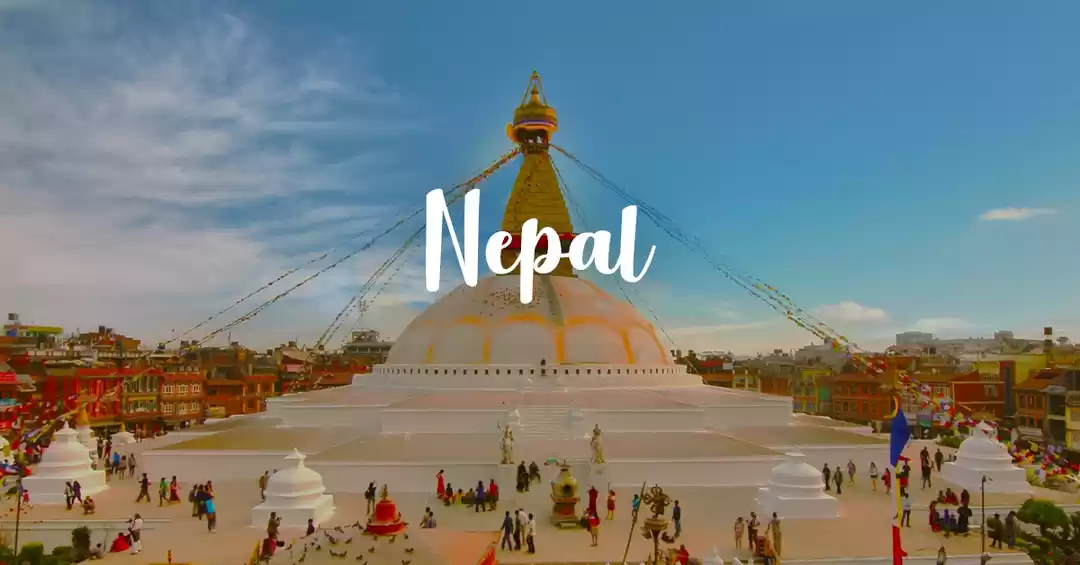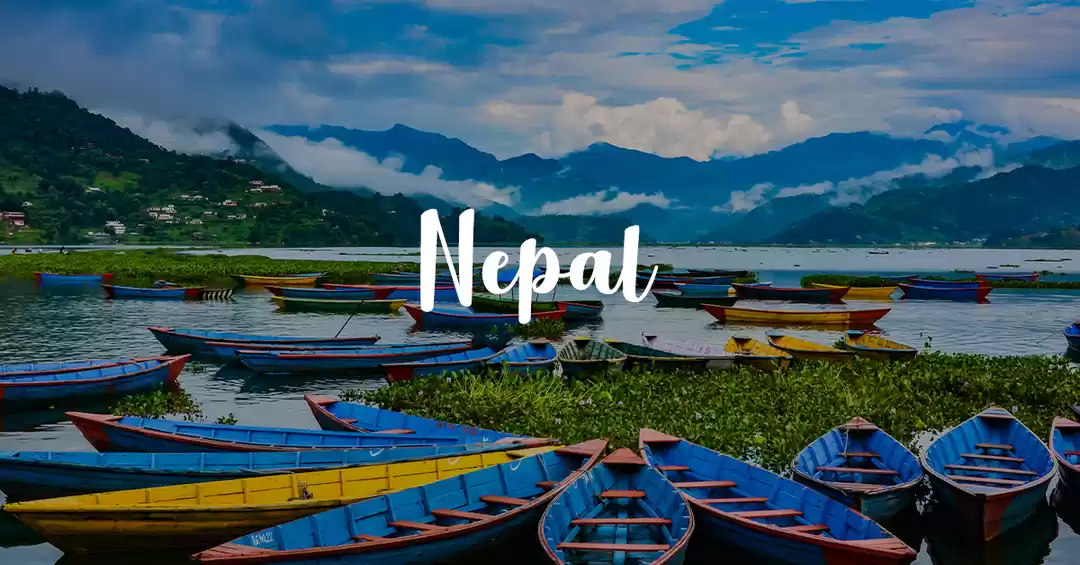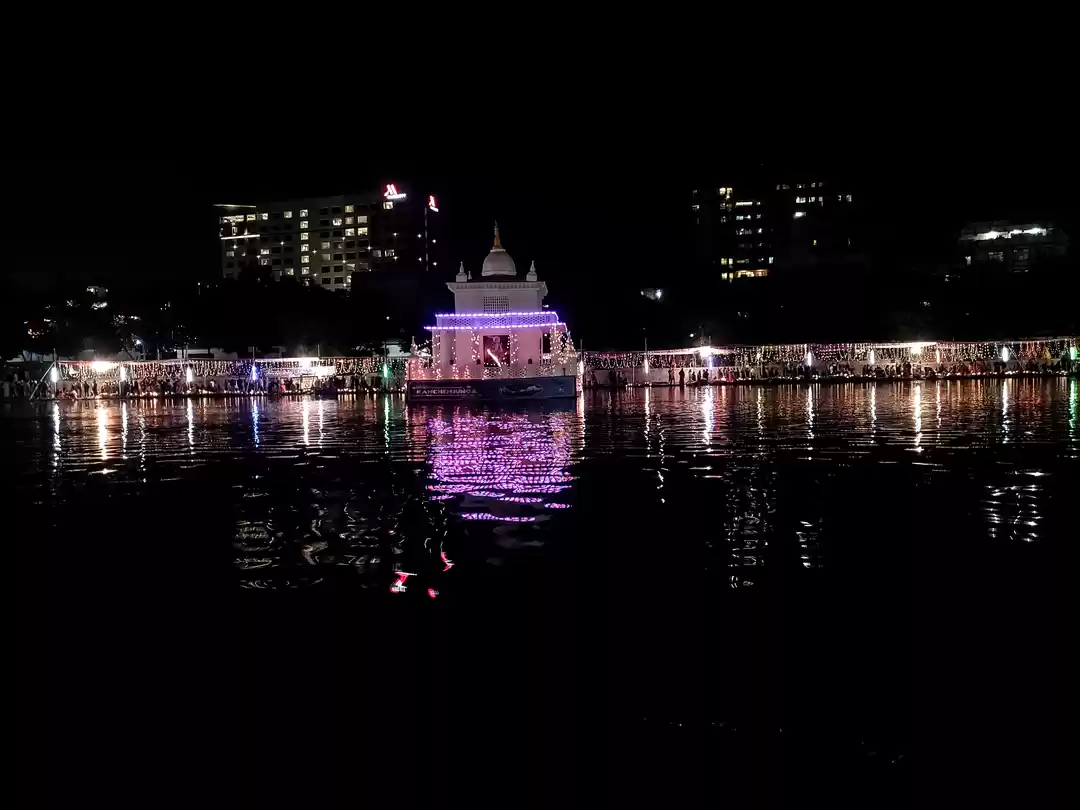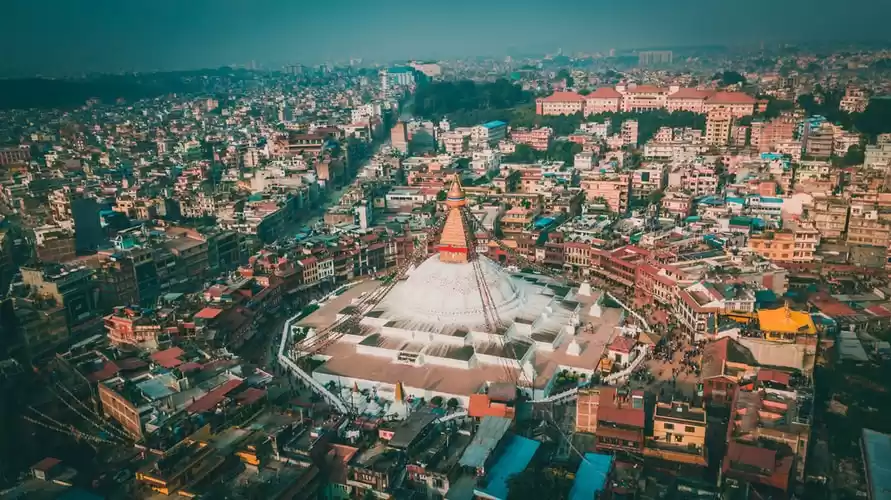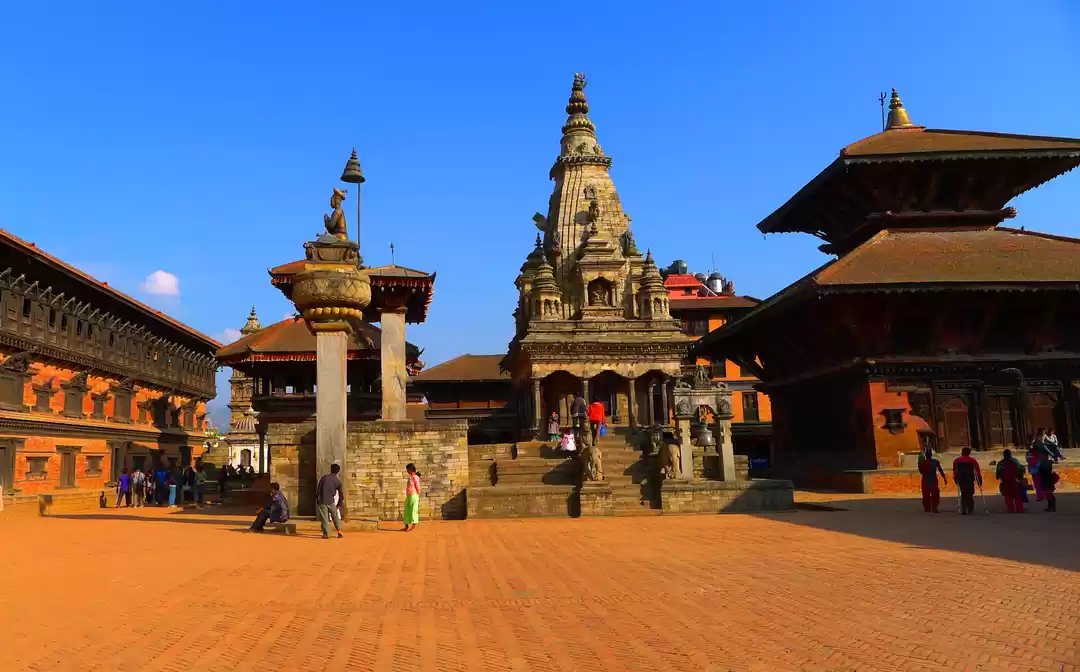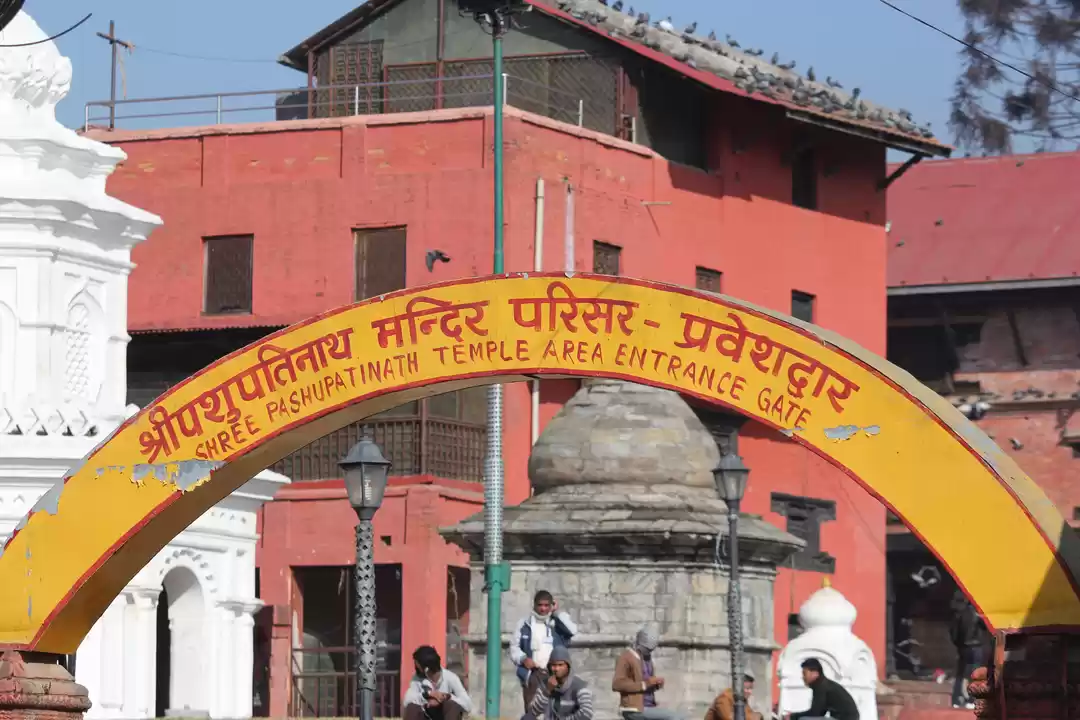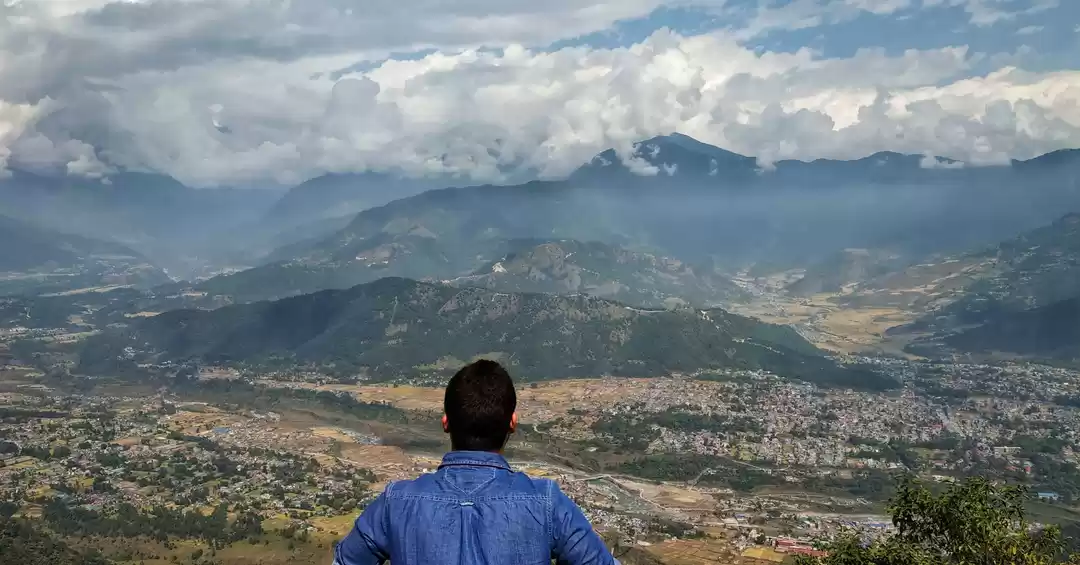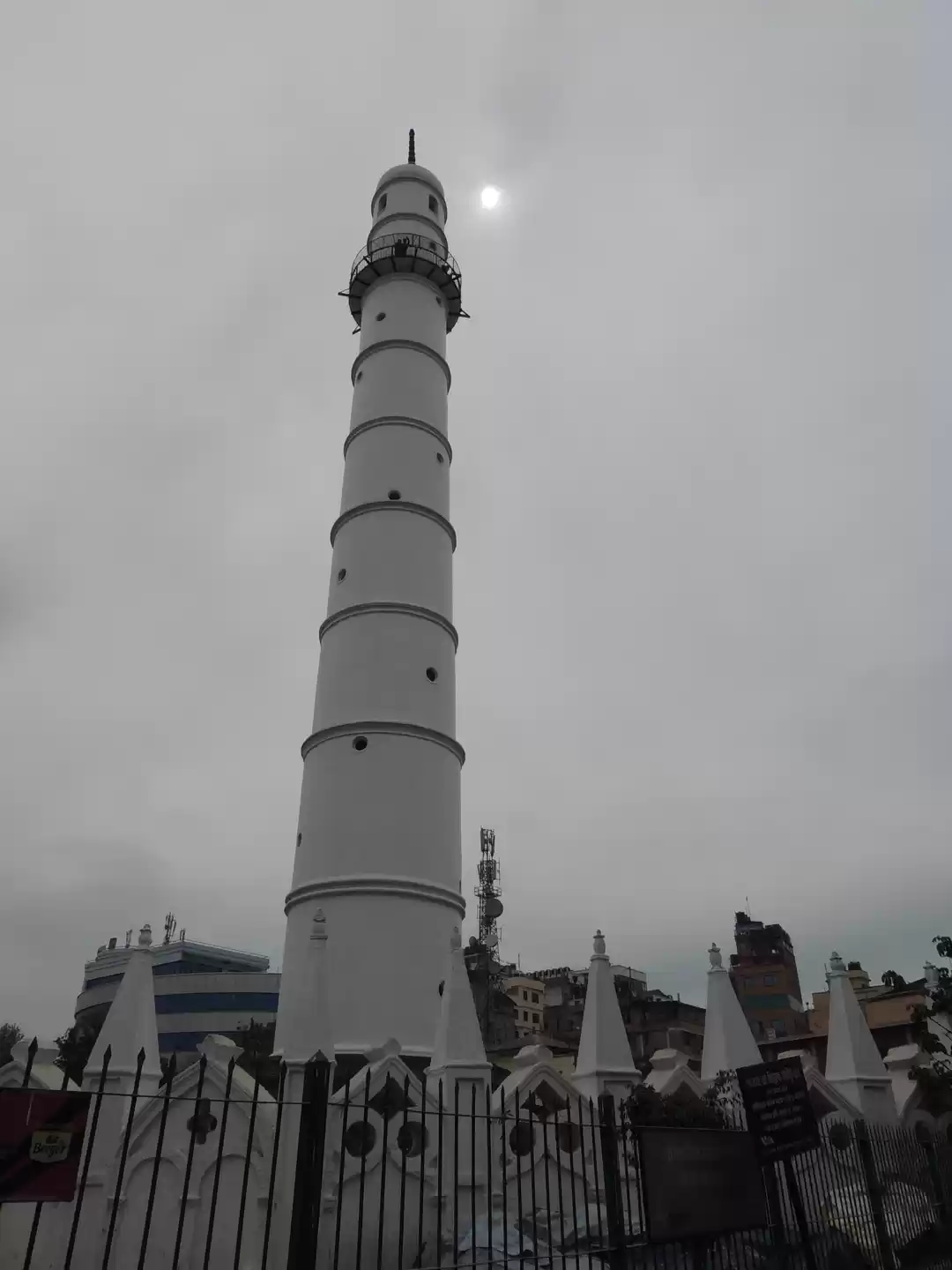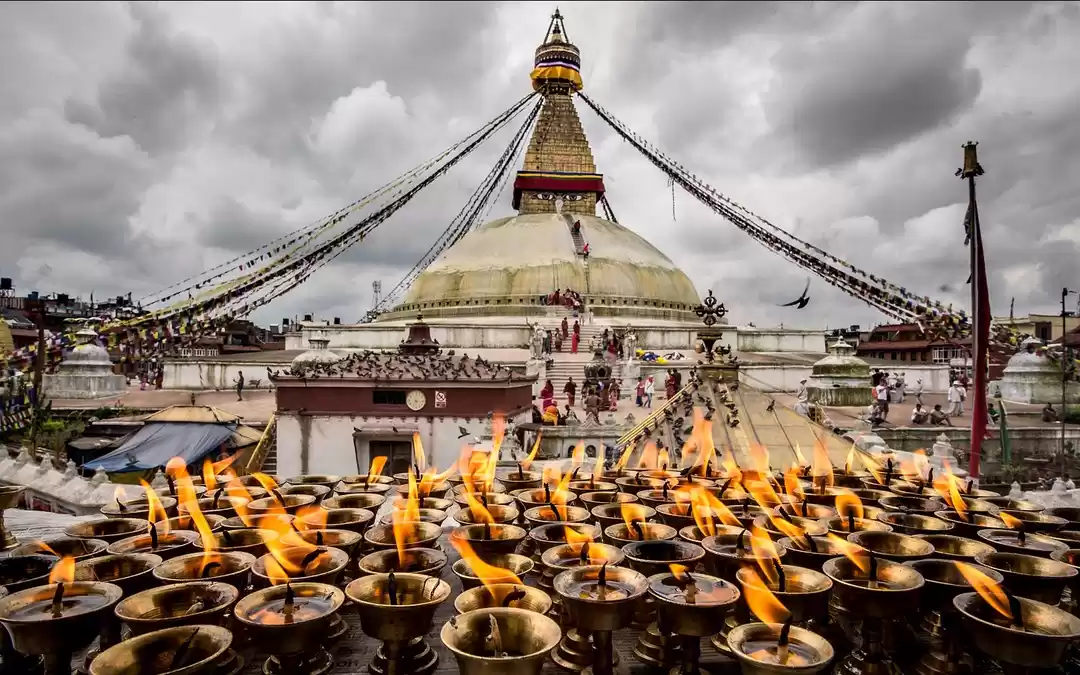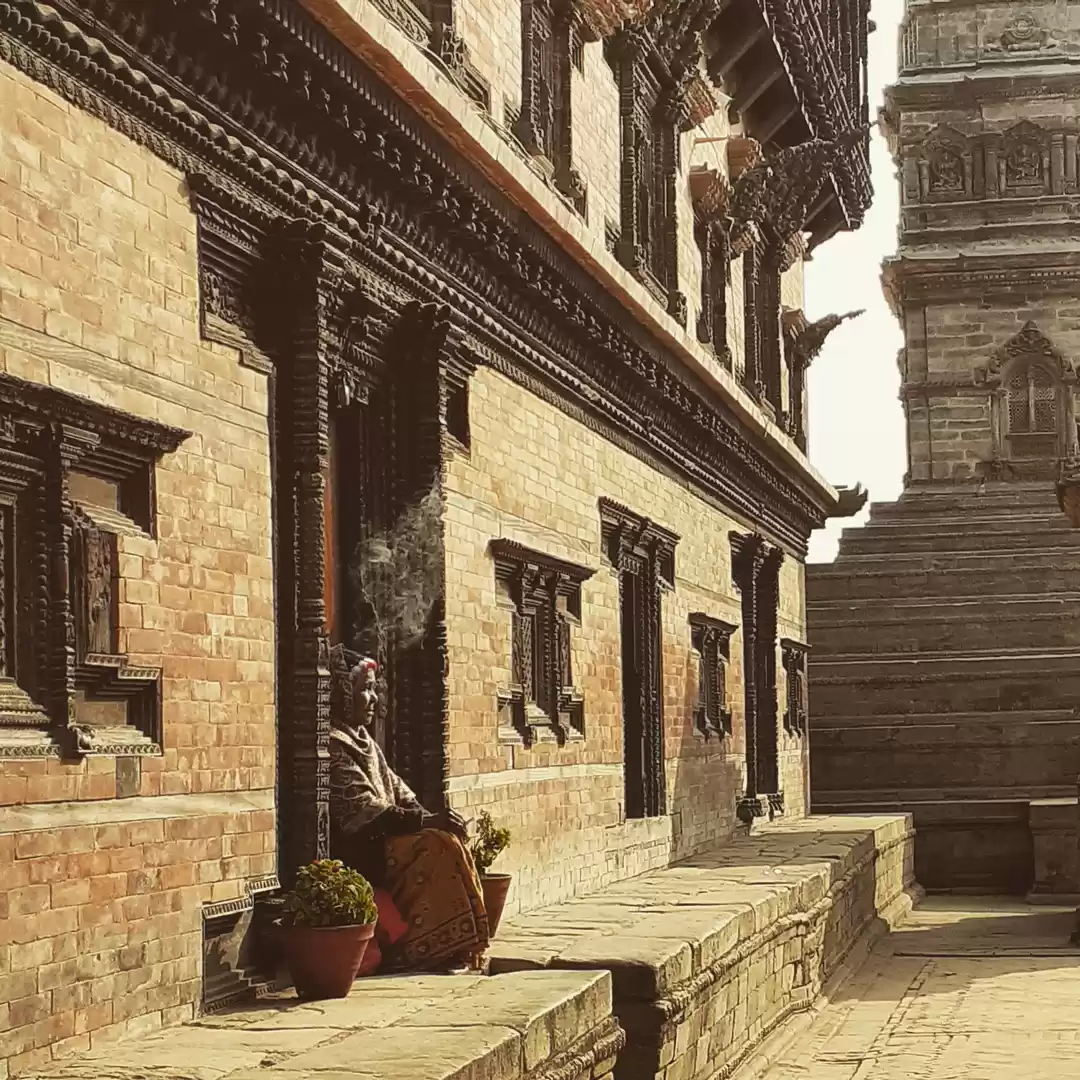
Nepal is heaven to 4 UNESCO World Heritage sites. Additionally it has UNESCO Cultural World Heritage Sites seven in Kathmandu Valley and Lumbini (Buddha Birthplace.)
Nepal is also home to UNESCO Natural World Heritage Sites in Chitwan National Park and Sagarmatha National Park.
Nepal has architecturally and culturally rich heritage sites which add both the aesthetic and natural value to the country.
Also read, things to know before travelling Nepal

Here are the best heritage sites you can visit in Nepal.
Hanuman Dhoka- Kathmandu Durbar Square (Basantpur):
Centrally located durbar in Kathmandu has a lot to see as it carries the history of the royal family, mythological stories, palaces, museums, temples and customs of Nepal. Kathmandu Durbar Square also is known as Hanuman Dhoka has the famous Degutale Temple, Taleju Mandir, Nasal Chowk, Sundari Chowk, Nine storey Basantapur Tower, Hanuman Temple, Mohan Chowk, Panch Mukhi, Tribhuvan Museum, King Mahendra Memorial Museum, Mul Chowk, Kumari Chowk and Kal Bhairab temple in its neighbourhood.

The Dhoka acted as a royal palace to the Malla and Shah dynasty in the 17th century. The palace has the famous statue of Hanuman at the entrance and other goddess sculptors beautifully carved on stones.
This place is shut on Tuesday for few hours in the noon for maintenance, except for that time you can visit this place anytime in week.
Here you can also get a sight of the Living Goddess Kumari at the Kumari Ghar, her home located in the middle of the chowk. The local people worship her as the goddess Kumari, a 17th-century tradition started by King Malla where a young Newari girl is selected to represent the Goddess before she hits puberty. You can visit the Kumari’s house and get a glimpse of the Goddess.
If you planning a trip during the famous Indra Jatra festival, you can get a chance to see Kumari on the chariot in the narrow lanes of Kathmandu. During the festival, the street is lite up with colourful masked dancers, chariots of Indra lord and local devotees in the lively parade.
Entry fees for the Kathmandu Durbar Square including Tribhuvan Museum:
Foreign Nationals- NPR. 1000
SAARC Nationals- NPR. 150
Chinese- NPR. 1000
Nepalese- Free
Timings:
Museum remains Closed on Mondays
Tue, Wed, Thu, Fri, Sat
10:30 AM – 4:30 PM (Jan-Oct)
10:30 AM – 3:00 PM (Feb-Nov)
Sun: 10:30 AM – 2:30 PM
Tip: You will find many tourist guides pouncing on you for a guided tour, make sure you fix a price before going ahead with the tour as he/she would later claim to get paid more.
Bhaktapur Durbar Square (Bhadgaon or Khwopa):
Known as the medieval town (only place untouched by western culture) of the Kathmandu valley, Bhaktapur was preserved for centuries until the 2015 earthquake. It was devastated due to the earthquake and the restoration work was still in progress during my visit in 2019 Aug.
Bhaktapur square hosts some of the living prides such as Lion Gate, the statue of king Bhupatindrashrines, stone temples, structures, 55 windowed palace, art gallery, woodcarvings, golden date and more.
Right next the Bhaktapur square lies the famous Nyatapola temple which is five-story tall and Dattatreya square known for its peacock window, woodcarving, brass & bronze museums. It is the cleanest and best-maintained place in Kathmandu.

Apart from these historic monuments and sculptors you can head along to pottery square through the narrow lanes and see the clay artefacts around the square.
Every square is popular in Kathmandu especially UNESCO heritages so each durbar has shopping places and restaurant cafe to hang around.
Do not miss to try the famous Juju Dhau- translated as king of curds. Made from naturally sweet buffalo milk, along with cloves, cardamom, coconut and cashew boiled and later cooled down to have it.
Entrance fees for Bhaktapur Durbar Square (with map and leaflet):
Foreign Nationals- NPR. 1500
SAARC Nationals- NPR. 500
Chinese- NPR. 500
Nepalese- Free
Below 10 years free.
For groups from 11-20, one tour leader can enter free.
National Art Museum, Bhaktapur (The fee includes wood carving and brass and bronze museum in Dattrareya Square)
Foreign Nationals- NPR. 150 (NPR. 100 for the camera, NPR. 200 for video camera)
SAARC Nationals- 50 (NPR. 50 for the camera, NPR. 150 for video camera)
Chinese- NPR. 150 (NPR. 100 for the camera, NPR. 200 for video camera)
Nepalese- Students: NPR.10 & Others: NPR.25 (NPR. 50 for the camera, NPR. 100 for video camera)
Timings:
Closed on Mondays
Tue, Wed, Thu, Fri, Sat
10:30 AM – 4:30 PM (Jan-Oct)
10:30 AM – 3:00 PM (Feb-Nov)
Sun: 10:30 AM – 2:30 PM
National Museum: Closed on Tuesdays
Tip: Make sure you visit the durbar in the morning so it is less crowded with tourist and local and you will find it more peaceful.
Patan Durbar Square (Lalitpur):
Beautiful stone and wood carvings of Hindu and Buddhist goddesses on the temple walls and the architectural craftsman of the newaris dated back to the 17th century. Once you enter the Patan Durbar Square you will find the exquisitely stone-carved Krishna temple in the Malla palace and pagoda temples over extolling the durbars’ look.
The 450 hectares land is bordered with four stupas built during the era of Ashoka emperor of the 3rd century BC. Things to see while in Patan are Mahaboudha Temple, Kumbeshwor temple, Krishna Temple, Golden Temple (Hiranya Varna Mahavihar), Mulchowk, Jagat Narayan Temple, Big Bell, Pillar of Yognarendra Malla, Hari Shanker temple, Vishwanath temple, Bhimsen temple, Mani Mandap, Café Pagoda, Rato Machhendra Temple, Minnath, Rudra Varna Mahavihar etc are the major attractions of Patan.

Entrance Fees:
Patan Durbar Square including Patan Museum
Foreign Nationals- NPR. 1000
SAARC Nationals- NPR. 250
Chinese- NPR. 1000
Nepalese- Students with a letter from school: NPR. 10 |
Student Card Discount: NPR.20 | Others: NPR.30
(Entry fees for Nepalese are applicable only for Patan Museum)
Patan Golden Temple
Foreign Nationals- NPR. 50
SAARC Nationals- NPR. 20
Chinese- NPR. 50
Nepalese- Free
Closed on Buddha Jayanti
Timings:
Closed on Mondays
10:30 am to 4:30 pm (Tuesday to Saturday)
10:30 am to 2:30 pm (Sunday)
Tip: The best time to visit the durbar is early morning as it is less crowded and you will be able to get some decent clicks and enjoy the peace around. Beware of scammers.
Swayambhunath Stupa (Monkey Temple):
Built by the King Manadeva in 460 and later enhanced by the King Pratap Malla in the 17th century, Swayambhunath Stupa is a solid realm made by the bricks and clay holding a conical shape copper smeared with gold paint and the Lord Buddha’s eyes embellished on all sides of the pinnacle. It is also called a Monkey Temple and is the holiest and oldest place in regards to the Buddhists. It obtains its name from the holy monkeys living in the north-west parts of the temple.

Legend says that Swayambhu was yielded on a lotus flower that blossomed in the lake of the Kathmandu valley. It has an ancient tale that claims Swayambhunath was an island thousand of years ago. Later the stupa was constructed and had also undergone restoration because of the Mughal invasion. Another attraction on the top is the scenic view of the Kathmandu valley. If you are an adventurer you can also plan to hike up the hill through stairways and enjoy the panoramic view of the city from the top. Or you can always opt to reach the top by car/taxi/bike and climb a few stairs to reach the stupa.
You will find a temple of Saraswati the goddess, stone-carved statues, altars of Buddhist and Hindu goddesses, colourful prayer flags draped around the stupa and prayer wheels surrounding the stupa.
Monkey TempleMonkey TempleMonkey Temple
Entrance Fees:
Foreign Nationals- NPR. 200
SAARC Nationals- NPR. 50
Chinese- NPR. 200
Nepalese- Free
Below 10 years free
Timings:
Monday to Sunday: 12:00 am – 11:59 pm
Open from morning to night.
Tip: Make sure you hold on to your bags as monkeys can misinterpret your actions and try to snatch the food.
Pashupatinath Temple:
Another holiest place for all the Hindu devotees, Pashupatinath is a temple of Lord Shiva lies on the sacred banks of Bagmati river. Built-in the 17th century, Pashupatinath temple is considered as one of the Jyotirlingas of Lord Shiva so many devotees all over the world come here to pay their tribute to lord shiva.
You can witness the temple surrounding which includes Deupatan, Jaya Bageshori, Gaurighat (Holy Bath), Kutumbahal, Gaushala, Pingalasthan and Sleshmantak forest.
Another highlight of this place is the live cremation that is performed on the riverbank next to the temple. It is surely not for faint-hearted but many visitors watch the ritual across the river. You can also check out the evening Bagmati Ganga Aarati along with Shiva’s Tandava Bhajan, written by Ravana, is carried out during the evening Ganga Aarati.

Entrance Fees:
Foreign Nationals- NPR. 1000
SAARC Nationals- NPR. 1000 (Free for Indian Nationals)
Chinese- NPR. 1000
Nepalese- Free
Timings:
4:00 am: Gate opens for visitors.
8:30 am: The idols of the Lord are bathed and cleaned.
9:30 am: Baal Bhog (breakfast) is offered to the Lord.
10:00 am: Then people who want to do Puja are welcomed.
1:50 pm: Lunch is offered to the Lord.
2:00 pm: Morning prayers end.
5:15 pm: The evening Aarati.
6:00 pm onward: In recent times the Bagmati Ganga Aarati that is done by the banks of the Bagmati has been gaining popularity.
7:00 pm: Doors close.
Tip: Only Hindus are allowed to worship in the temple. Non-Hindus can see the temple from outside. Avoid going on a festival day or any auspicious day you will find a long queue and will have to wait for hours to worship. Most of the temples do not allow photography, so make sure to avoid clicking pictures inside the temple.
Boudhanath Stupa:
Boudhanath Stupa was built by King Man Dev in the 5th century A.D. and the 36-meter-high stupa is one of the largest stupas in South Asia. The colossal and ancient stupa was built on octagonal base steps embedding the Buddha teachings. The vibes around the stupa are captivated with sandalwood fragrance, chanting monks, sounding prayer wheels and mantra strolling around the atmosphere.
The stupa is surrounded by many restaurants, cafe, shops and temples. The best night view of the Stupa is during the festival time when the stupa is all lit up.

The design is inspired and instituted in the shape of Mandala to replicate the Gynangste of Tibet. The location also holds an important value as it lays on the ancient trade route to Tibet where the merchants use to offer prayers for decades.
Similar to Swayambhunath Stupa each side are embedded with a pair of the Buddha eyes symbolizing awareness. The canopy consists of 13 stages and at the ground level, you will find more than 250 images of meditational Buddha inset behind the prayer wheels.
Entrance Fees:
Foreign Nationals- NPR. 400
SAARC Nationals- NPR. 100
Chinese- NPR. 400
Nepalese- Free
Below 10 years free
Timings:
Monday to Sunday: 6:00 am – 10:00 pm
Tip: Do not visit this place during noon especially in summers as the climate is very hot and because of the white stupa the sunrays reflects your eyes.
Changunarayan Temple:
Another UNESCO heritage site with two-tiered Changunarayan temple is the temple of Lord Vishnu also called as Narayan. The temple is a masterpiece that belongs to 464 A.D as inscribed on the stones. It is the oldest temple in Nepal. You will find the real beauty lies in the stone sculpted idol of Vishnu’s 10 Manifestations.
You will also find other temples of Kileswar Shiva, Chinnamasta Devi and other goddesses in the proximity of Changunarayan temple.
You can also witness an impressive landscape of Manohara River next to the temple.

Entrance Fees:
Foreign Nationals- NPR. 300
SAARC Nationals- NPR. 100
Chinese- NPR. 300
Nepalese- Free
Timings:
Monday to Sunday: 9.00 AM and 9.00 PM.
Tip: Do not miss this temple as I did, you can always reach here in 15 minutes if you covering Bhaktapur Durbar Square. No Photography inside the temple.
Lumbini:
Lumbini the birthplace of Buddha dwells in the southern plains of Nepal. Being a birthplace it is a sacred pilgrimage site for Buddhists.
Emperor Ashoka during the 250 BC had built a long stone pillar with the writing about the birth of buddha. Lumbini is yet not famous among the tourist crowds but will soon get famous as it signifies both historical and cultural values.

If you plan to cover Lumbini you will need extra days to fit in your itinerary. You can reach Lumbini by 3 ways of options-
The road by Bus- It can take up to 7-8 hours if you opt by bus. And the cost will range between 500-1500 Rs.
The road by Car- It will take around 5-6 hours by car to reach Lumbini and the cost will range between 4000-8000 depending on the number of people or the car you pick.
Airway: You can find more than 10 flights per day and it is the fastest route to reach Lumbini within 1 hour. The cost of the flight would range between 2500-10000 Rs. depending on how soon you book. Once you reach the airport it is a 20 minutes drive to Lumbini.
If you have a day in hand you can also check out Lumbini Garden, Maya Devi Temple, Tara Foundation, World Peace Pagoda, China Temple, Thai Monastery, Burmese (Myanmar) Temple, Nepal Buddha Temple and Dharmaswami Buddhist monastery are the major attractions of here.
Entrance Fee:
Foreign Nationals- NPR. 200
SAARC Nationals- NPR. 100 (NRs. 16 for Indians)
Chinese- NPR. 200
Nepalese- Free
Lumbini Museum
Foreign Nationals- NPR. 50
SAARC Nationals- NPR. 50 (NRs. 16 for Indians)
Chinese- NPR. 50
Nepalese- 10
Timings: Lumbini Museum: Closed on Tuesdays
World Heritage Sites (Natural)
Chitwan National:
Stretched across an area of 930+ sq. km. lies the Royal Chitwan National Park which is classified as the Natural Heritage Site by UNESCO. The park is worth the excursion through jungle safari.
You will find nature’s rarest species and wild-life of the eco-system. You can opt to stay in lodges, hotels or resorts in and around the park and enjoy the other activities like canoeing, safaris, jungle walk, bird watching, elephant breeding and safari and other adventures around. You will also learn about the cultural tour which highlights the lifestyle of the Chitwan people their culture, ritual and customs. In the evening and night, many exotic events happen which you can book as per your choice.

You can spot one-horned rhinos, deer, monkeys and more than 500 species of birds. If you are lucky, you may spot a leopard, wild elephant or sloth bear and also once-in-a-lifetime opportunity to spot a sumptuous Bengal tiger that is the foremost attraction.
You’ll also have the chance to experience domesticated elephants, although how that interaction takes place is now undergoing a paradigm shift driven by animal rights concerns. There is a daily admission fee that is normally bundled into the overall cost of a tour.
How to reach there: It is a 5-6 hours drive from Kathmandu, or you can fly to Bharatpur and save some time. There are about 6-7 flights that fly daily and the fly period is only 25-30 minutes in total. The cost will vary depending on what season you booking your tour.
Best Time: The best time to visit the park is between October to March as the sky is clear and the weather is cool. Do note that the locals cut the grasses for their usage starting January which gives better visibility compared to that in monsoon where the grass grows tall and thus spotting the creatures become difficult.
Also during monsoon jeep safari gets risky and also limits you to enter few zones in the park.
Summer is the best time to visit the park as the water reservoirs dry up and the animals come out to find water sources to douse their thirst.
Entry Fee of Chitwan National Park:
Foreigners – 2000 NPR (valid for one day in the park and the next day for buffer region if the ticket is purchased after 2 pm)
Locals – 150 NPR
SAAR Citizens – 1000 NPR
Children Below The Age Of 10 – Free
Wildlife Safari Timing
Timing – 6 am to 6 pm
Safari Timing – 6 am to 6 pm (timing changes with season and availability of vehicle)
Note Cost and timing changes with season and demand.
Sagarmatha National Park:
Located at the foothills of Himalayas the Sagarmatha National pack stretched up to 1,148 sq. km.
It offers the most scenic view of glaciers, valleys, river and mountains.
The park has a collection of plant varieties (blue pine, rhododendrons), birdlife (snow cock, pheasant, snow pigeon) and extrinsic animals (snow leopard, pandas, lynx). You can also witness the majestic Mt. Everest, Gokyo Lakes, Dudh Kosi, Tengboche Monastery, Kala Patthar and many more.

How to reach there:
The only way you can reach the park is by taking a flight from Kathmandu to Lukla, from there it is another 35kms ride by car. Because of no road network to the area, you only have this option available. Another way is to choose the roadway and trek around 10 days to reach the park.
Best Time: July to September there is heavy rainfall, and in winters the temperature falls to minus degree Celsius which make movement difficult. So the ideal time to visit the park is between October to November and March to May, during these months the temperature is decent and you can roam around safely.
Entry Fee and Timing of Sagarmatha National Park
You can get the pass at the visitor centres of Sagarmatha National Park. which are at the Monzo and Namche Bazaar.
Foreigners: 3000 NPR
SAARC Countries: 1500 NPR
Nepalese: 150 NPR
Free for children below 10 years.
Timings: 24 hours of the day the park gets open.



